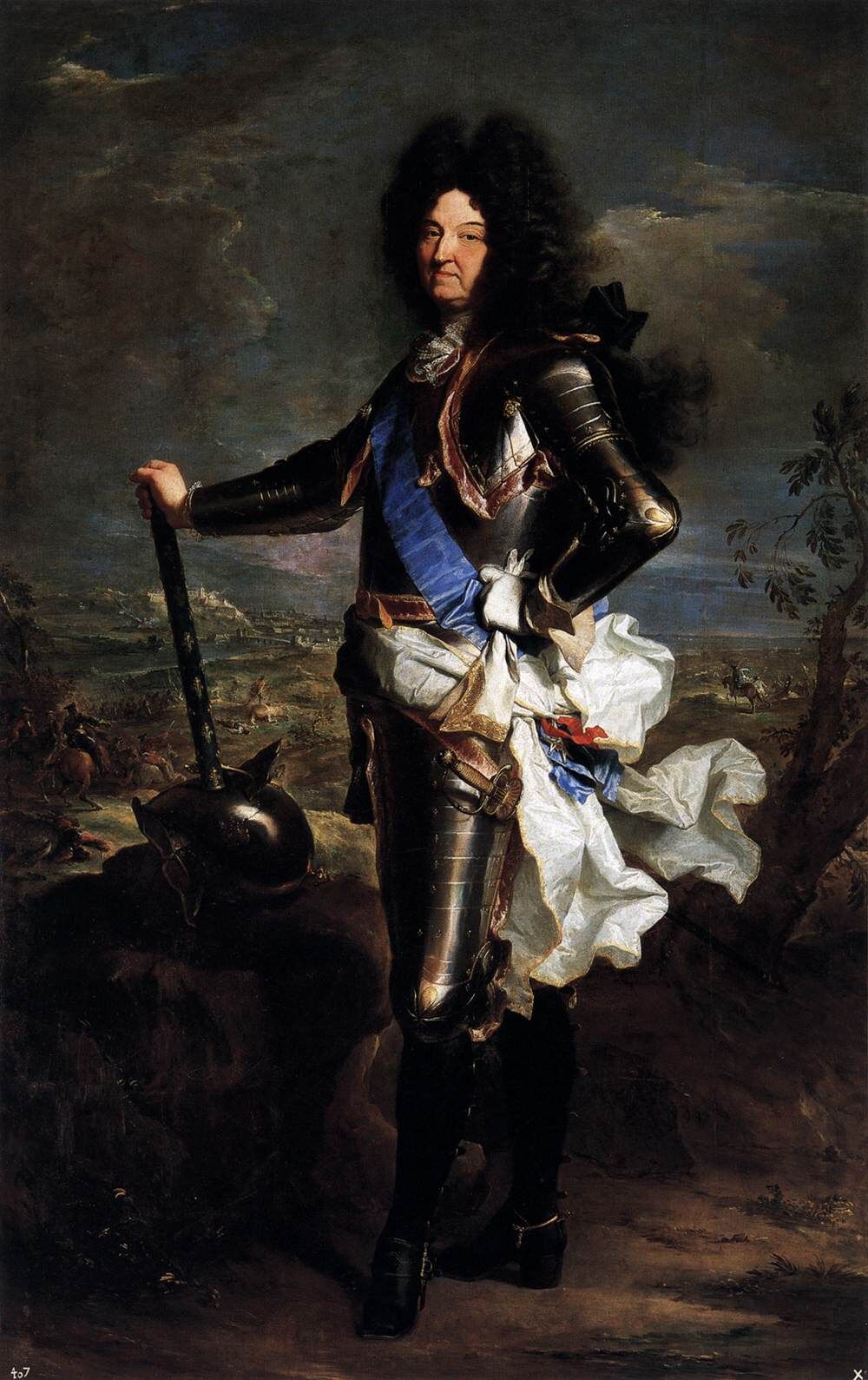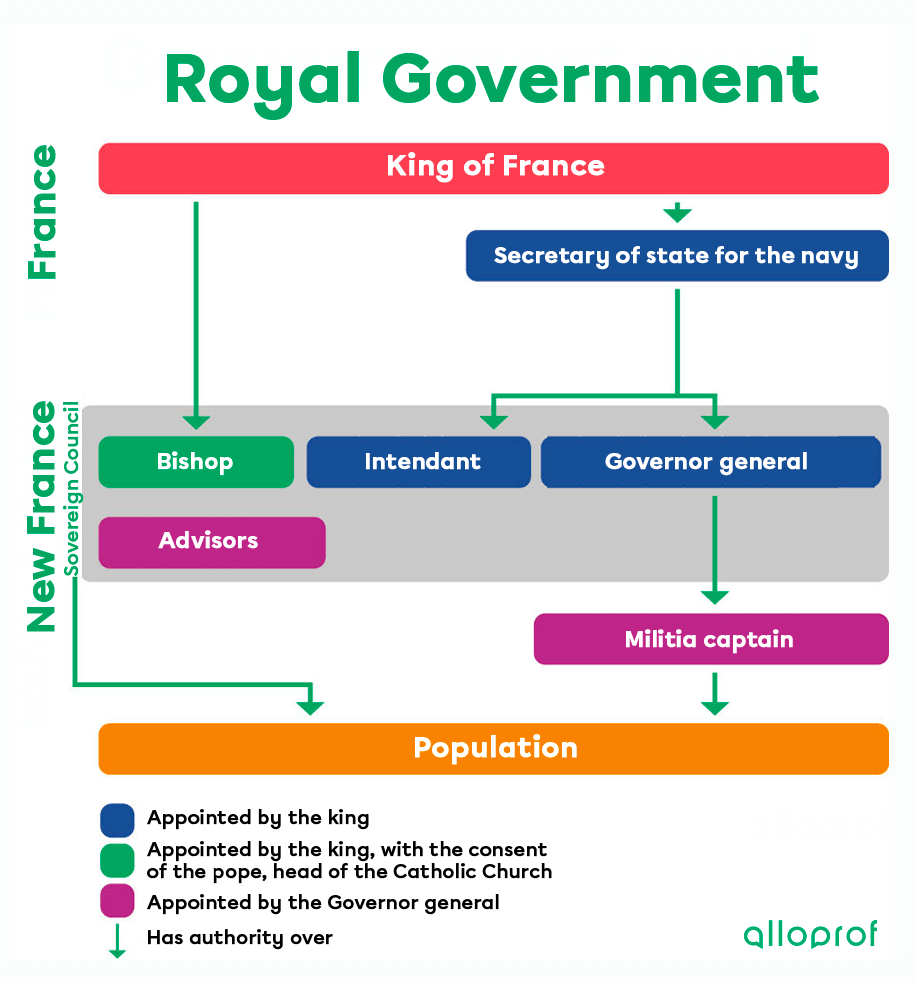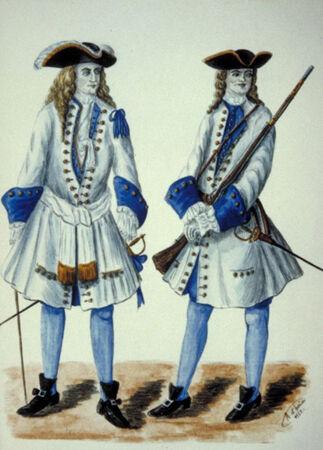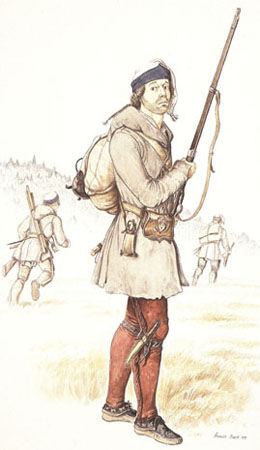The Company of One Hundred Associates’ monopoly of the fur trade ended in 1663 after it failed to meet its obligations in terms of populating the colony. The King of France, Louis XIV, assumed control over the colony and tried to restore the situation. This was the start of the Royal Government, a period that lasted from 1663 to 1760.

King Louis XIV
In 1663, France was ruled by an absolute monarchy with a divine right, which meant that the king held all the power over his kingdom and its colonies. He could appoint several people to govern New France and form the Royal Government.
Absolutism, or absolute monarchy, is a political system in which the sovereign holds all the power. To increase his authority, the ruler could claim he derived his power from God. This was then called absolute monarchy through divine right.
The Royal Government political system governed New France. The members of this government were located in two different places: France and New France.

The King and the Secretary of State for the Navy
The King was the head of the political system. He held all the power and could appoint people to different positions in the government. He appointed the secretary of state for the navy, sometimes referred to as the “minister of the marine,” to govern the different colonies. He was the one who sent orders to the colonies.
The Sovereign Council
The Sovereign Council was composed of the governor, the intendant, the bishop and a varying number of advisors. Its role was to apply the king’s instructions, as instructed by the Secretary of state for the navy, and to advise the leaders. It was also the highest court of law in the colony.
| Governor General |
|
| Intendant |
|
| Bishop |
|
Militia Captains
The militia captains were the point of contact between the people and the leaders. They communicated royal orders to the inhabitants of the colony.
The colony was frequently attacked by the Iroquois Confederacy, also known as the Five Nations, so the settlers needed constant military support to defend it. There were two categories of soldiers in New France: professional soldiers and militiamen.

French Professional Soldier

Militiaman
Professional soldiers were paid by the State to train and fight in wars at the place and time chosen by their commander. During times of peace, they were tasked with keeping order in the colony. Militiamen were inhabitants who had to answer the governor general’s call to fight alongside professional soldiers during conflicts. Militiamen were not professional soldiers.